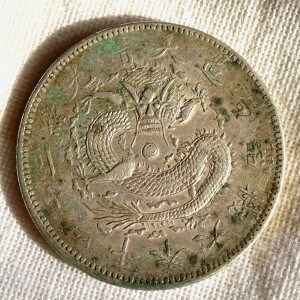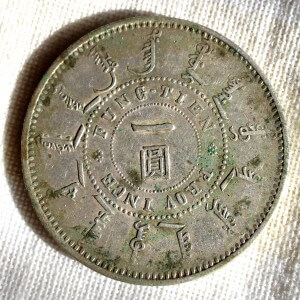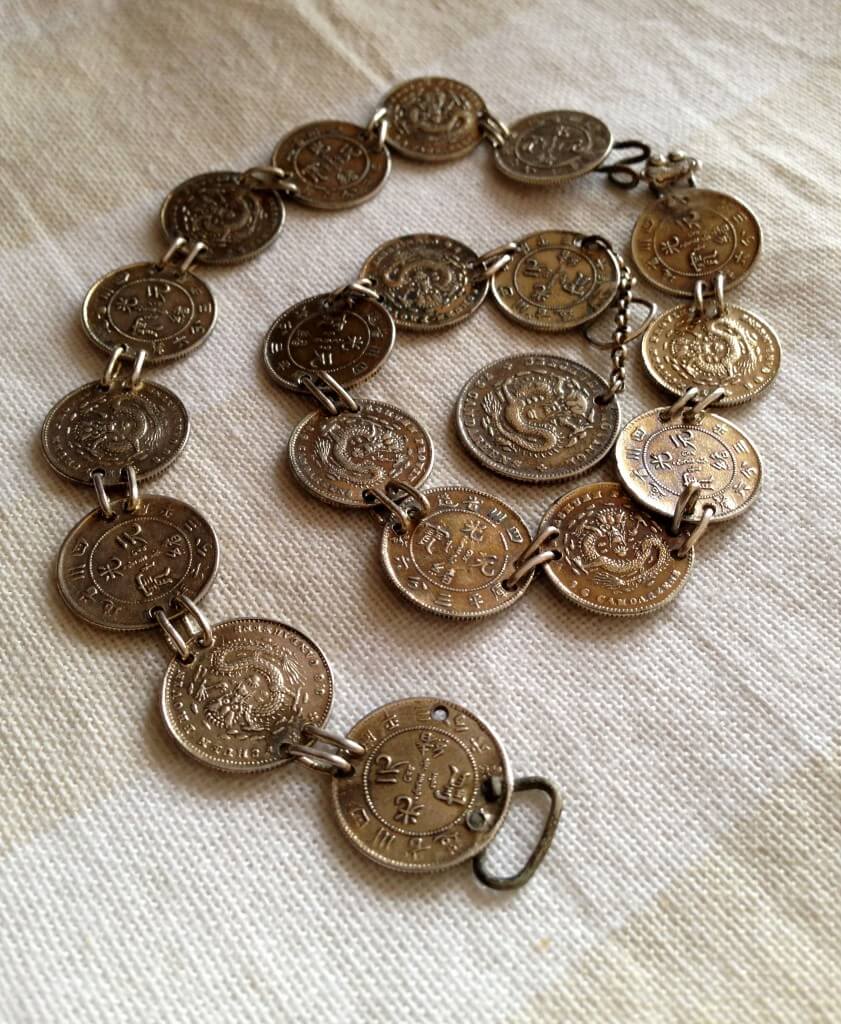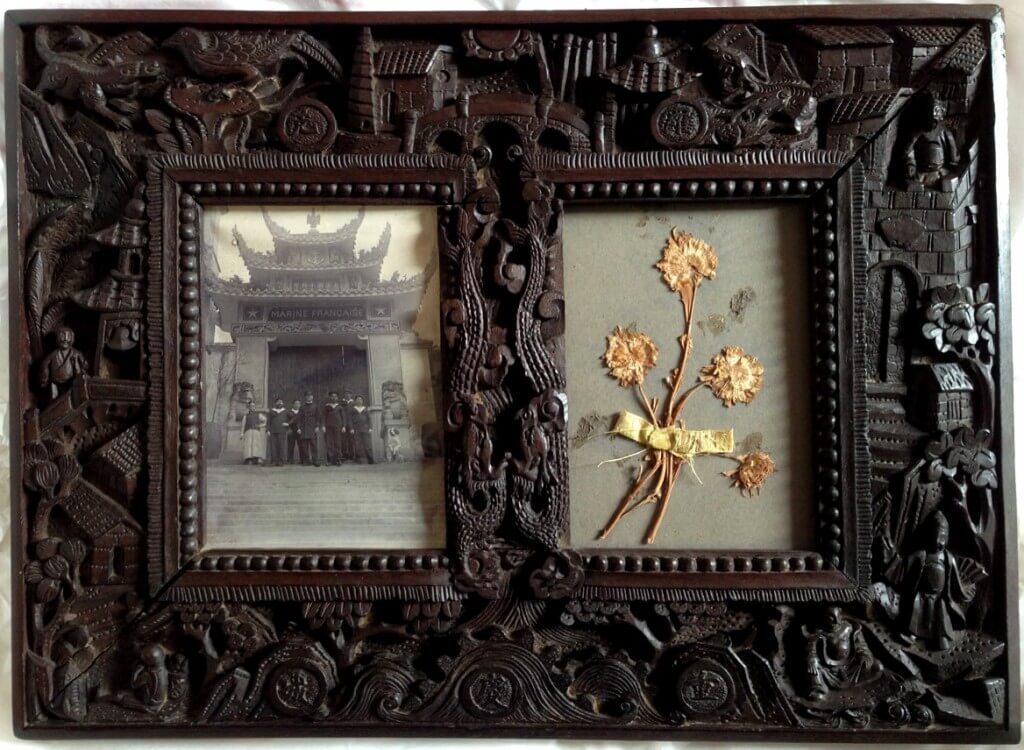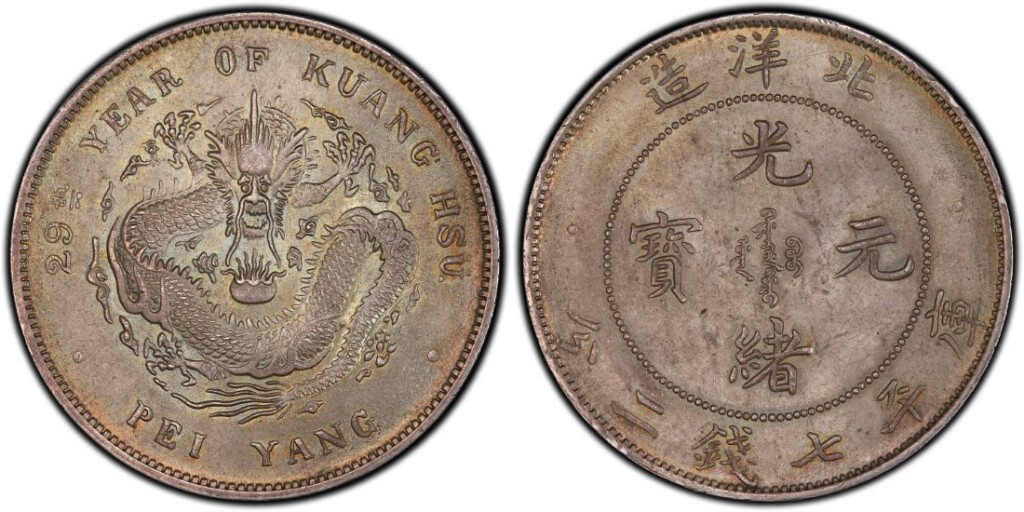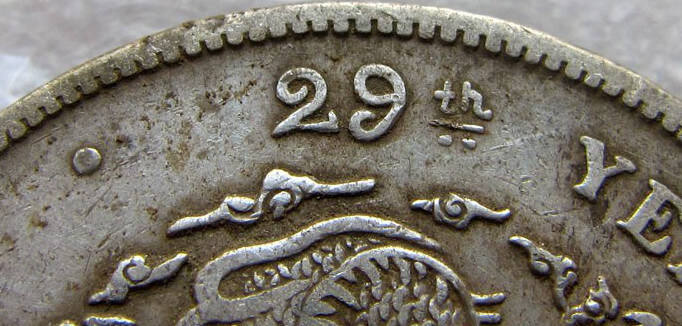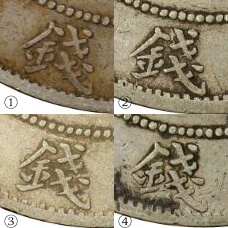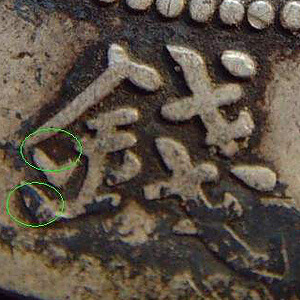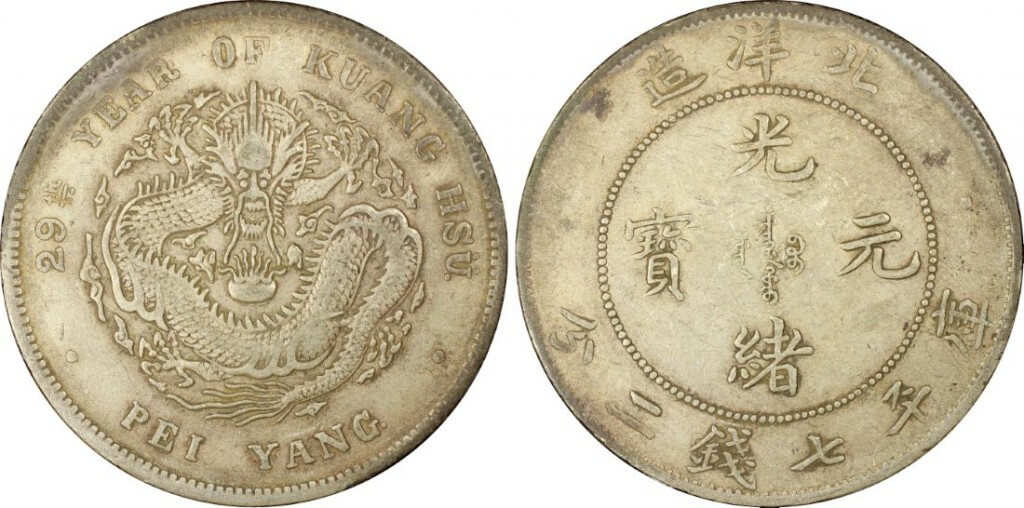Sometimes it feels as if it is the coins that find the collector, rather than the way around. Last month, a reader contacted me intrigued by a dragon coin he had unearthed in the woods around Riga (Latvia). He was used to find Russian coins, but this time it was a superb Large-Mouthed Dragon from the Fung-tien province that made ring his metal detector.
When I saw the pictures he sent me, I knew immediately that this beautiful coin with hints of verdigris and earthy surfaces was a genuine Chinese silver dollar, buried alive over a century ago. The Large Mouth dragon is a very rare variety of the 1898 Fengtien dollar, hard to find even in China. How did such a rarity end up in Latvia?
At the turn of the century, both the Liaotung peninsula (which encompassed most of the Fengtien province) and Latvia were under Russian rule. So it is very likely that the coin somehow traveled in the pockets of Russian soldiers or the coffers of merchants, from Port Arthur in Russian Manchuria to the Imperial Port of Riga in Latvia. It was lost or hidden there for a hundred years before being found by our fellow reader.
After more than a hundred years and against all odds, that rare Fengtien coin found its way back home to Northern China after I forwarded the pictures to a fellow Chinese coin collector in Shenyang who was looking for this variety to complete his set of 1898 Fengtien coins.
In these lucky encounters lies one of the most joyful thrill of collecting. Yesterday, I serendipitously found two charming bracelets made of genuine 3.6 candareens silver coins from the Szechuen province – in Bourges, France, out of all place. I did not expect to find Szechuan dragons while travelling abroad! While these holed coins have already lost all numismatic value, these bracelets are still fascinating artifacts:
They were brought to France by an Admiral serving in French Indochine before the First World War. This kind of jewelry was common in China at the time: smaller silver coins were fashionned in buttons to fasten the coat of wealthy merchants, sequins on bridal headdresses, or bracelets adorning the wrists of beautiful women. Along with the two bracelets came a moving black and white photograph of their former owner, framed in carved fragrant wood. According to the handwritten note behind the picture, it was taken in Chongqing in 1906:
It is rare to have such a precise idea of the provenance of the coins we collect. These lucky bracelets which were brought to France in a military corvette will soon return home to China, in my pocket as I fly back to Beijing.
The 1903 Chihli dollar (Y73.1) is much scarcer than its sister Chinese silver dollar, the famous Y73.2 made in 1908 (see related articles), but it is also somewhat less studied. Currently, only the variety with a full-stop after PEIYANG is acknowledged by grading agencies. There exists actually much more interesting and rare varieties, which are actively sought after in China. Similarly to the 1908 Chihli dollar, this 1903 dragon coin has been minted in several version with different typography for the date. The most dramatic is the 艺术字 (artistic font):
Besides the roman numerals, another device to examine carefully is the 錢 character on the reverse of the coin. On the full-stop after PEI YANG coins, the 金 part (radical) on the left of the 錢 character has been calligraphied in four different ways:
The picture 1 is representative of what you see on 90% of Y73.1 dragon dollars: this is the most common variety. The calligraphy shown on picture 3 is called 中折金 and is much scarcer: both side strokes of the 金 radical are curved in a very noticeable way. Even more rare, the 挑金 variety (picture 2) is easily identified by its incurved left stroke. The rarest of all the varieties is the 双折金, with characteristic vigorous tapered strokes on the side and bottom (see picture 4 and details).
If like me you collect Pei Yang 29th year Chinese silver dollars, be on the lookout for these rare varieties: while they enjoy some popularity in China, most collectors abroad are still unaware of them, so there is good opportunities around.
